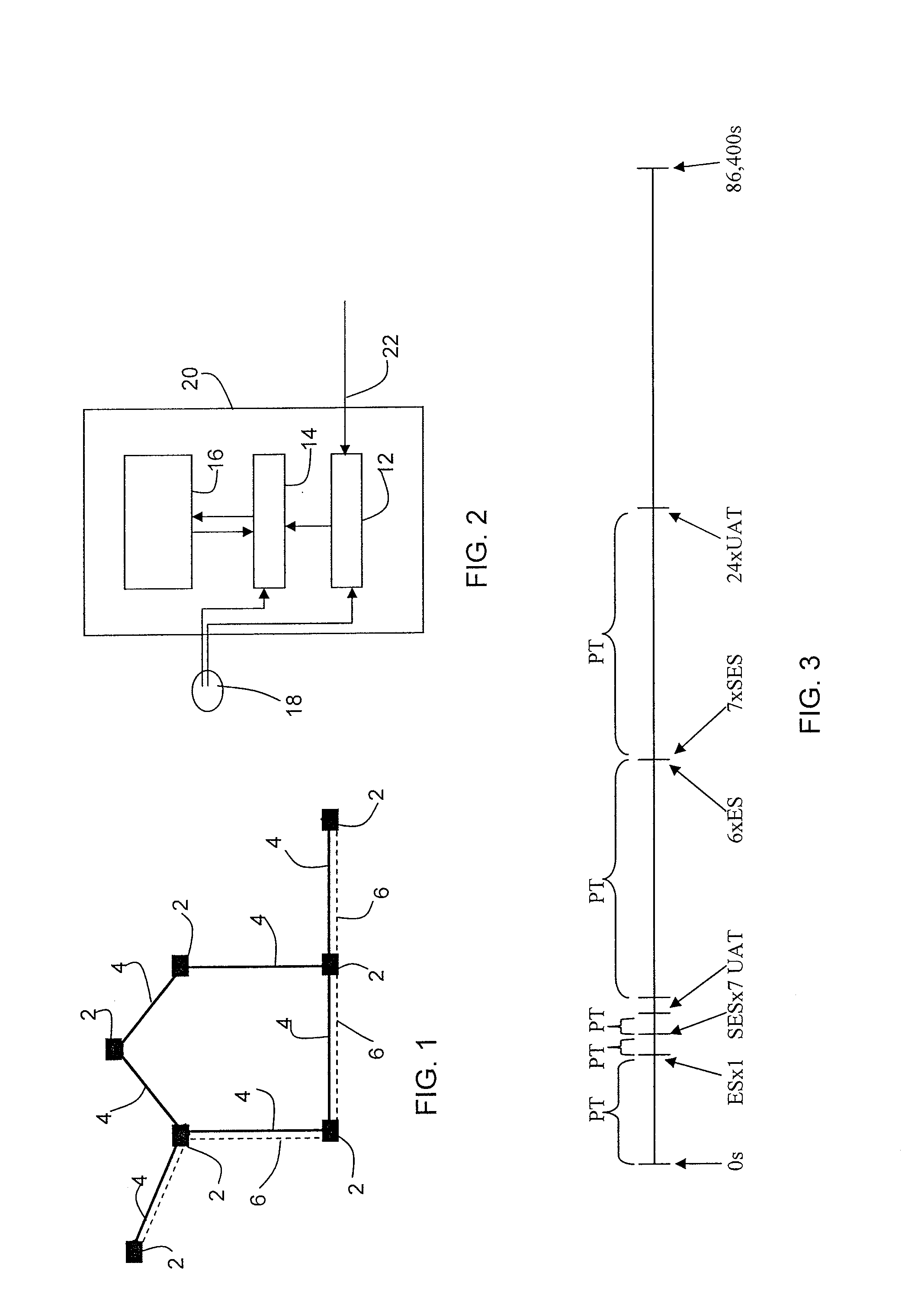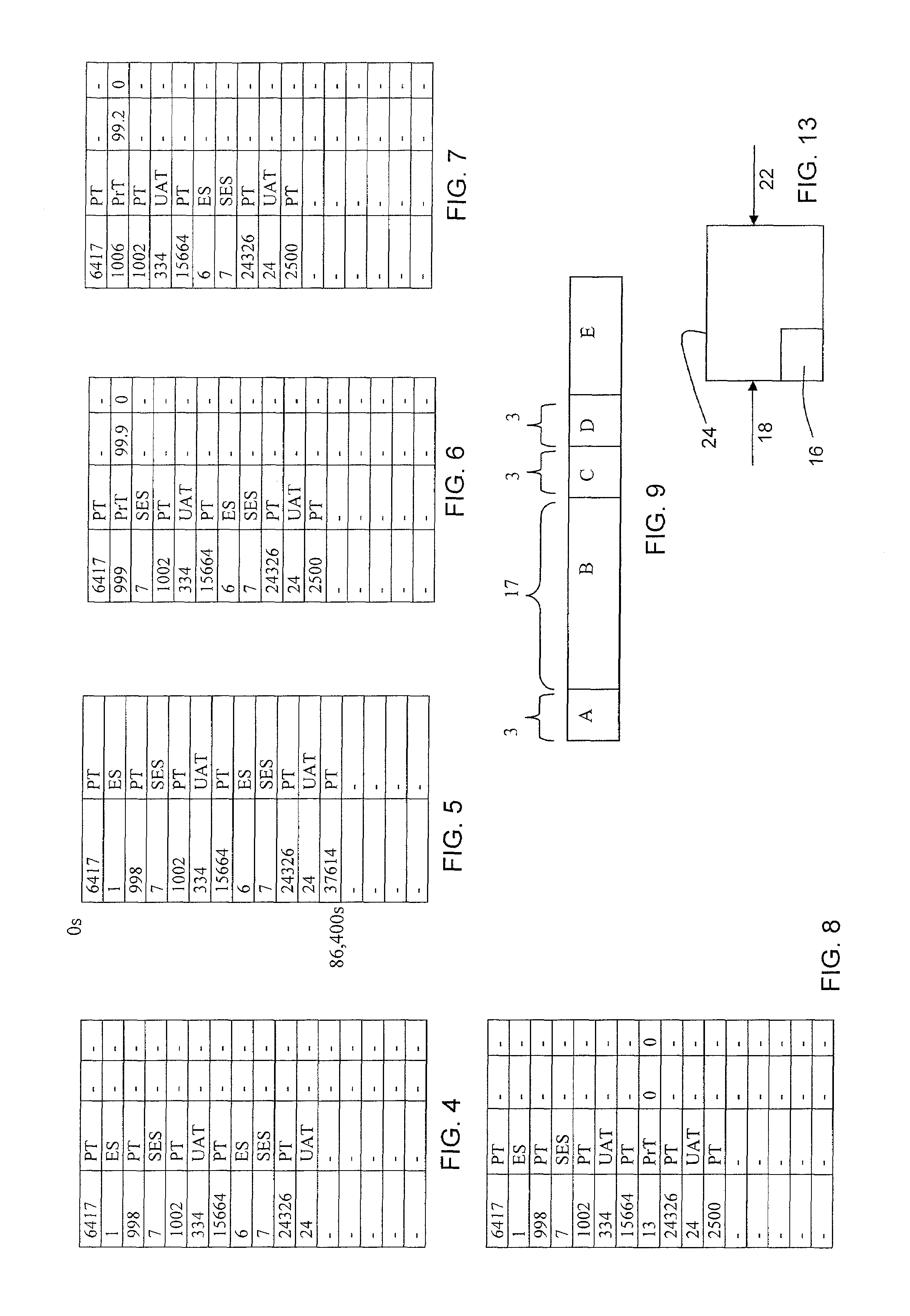Performance monitoring in a communications network
a technology for communications networks and processors, applied in data switching networks, frequency-division multiplexes, instruments, etc., can solve problems such as alarm flood or surge, alarm multiplexing, and faults on all paths multiplexed on that link, and achieve the effect of reducing the amount of memory required to store records
- Summary
- Abstract
- Description
- Claims
- Application Information
AI Technical Summary
Benefits of technology
Problems solved by technology
Method used
Image
Examples
Embodiment Construction
[0078]There will now be described by way of example the best mode contemplated by the inventor for carrying out the invention. In the following description, numerous specific details are set out in order to provide a complete understanding of the present invention. It will be apparent, however, to those skilled in the present invention may be put into practice with variations of the specific.
[0079]FIG. 1 shows a portion of a communications network comprising a plurality of network elements (2, 2′) connected by communication links (4). The links may comprise radio frequency links, optical links or electrical links for carrying signals between the network elements. The communication links (4) shown schematically in FIG. 1 may carry signals between network elements in both directions. The communications network is managed by a network management system (not shown) with which some or all of the network elements (2, 2′) communicate. Many signals may be multiplexed onto each link (4) so t...
PUM
 Login to View More
Login to View More Abstract
Description
Claims
Application Information
 Login to View More
Login to View More - R&D
- Intellectual Property
- Life Sciences
- Materials
- Tech Scout
- Unparalleled Data Quality
- Higher Quality Content
- 60% Fewer Hallucinations
Browse by: Latest US Patents, China's latest patents, Technical Efficacy Thesaurus, Application Domain, Technology Topic, Popular Technical Reports.
© 2025 PatSnap. All rights reserved.Legal|Privacy policy|Modern Slavery Act Transparency Statement|Sitemap|About US| Contact US: help@patsnap.com



